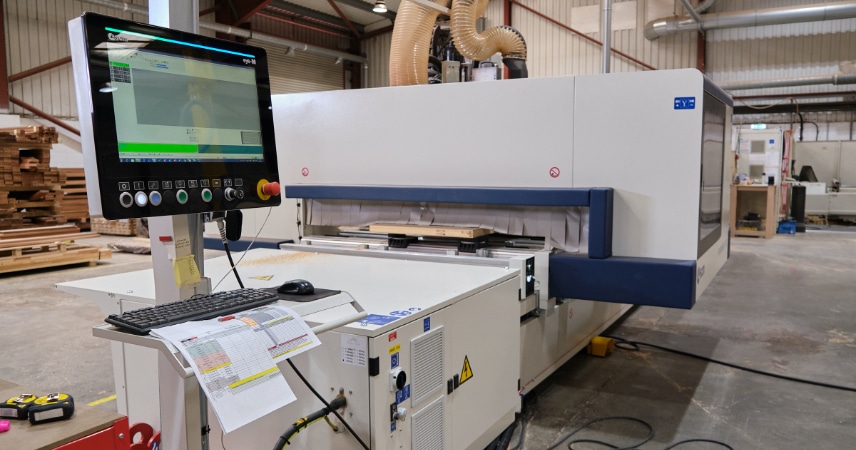The performance of a fire door can be the difference between life and death. Acting as the first line of defence, fire doors provide vital minutes for people inside a property to escape. This is why fitting the right fire door is critical. With this in mind, it is absolutely essential that when you are sourcing fire doors, building managers consider the importance of fire door certification.
Under UK legislation, to place a fire door on the market, it must meet specific standards to resist the passage and spread of fire. If you are procuring fire doors, you should ask the manufacturer, supplier or installer to provide evidence of fire door certification. In this article, we take a look at the specifics of what to look for when checking the compliance of a fire door.
Under UK legislation, to place a fire door on the market, it must have evidence of performance to resist the passage and spread of fire. If you are procuring fire doors, you should ask the manufacturer, supplier or installer to provide such evidence.
We take a look at the specifics of what to look for when checking the compliance of a fire door.
Types of Fire Door Testing
Independent Testing
In the UK, all fire door designs should be tested to BS 476 Part 22, or the European equivalent BS EN 1634 Part 1, to represent how they will perform in a fire. This primary test is a key aspect of fire door certification which should be undertaken at a UKAS approved test house with qualified experienced test engineers. A primary test report is then produced which details the results of fire door testing and outlines what was tested and what was achieved.
Smoke Leakage Test to BS EN 1634-2: 2004
As an additional assurance, alongside that of primary test data, smoke leakage testing in accordance with BS EN 1634-2 ensures full compliance with both fire and smoke certification. This fire door accreditation test should be carried out at an independent, nationally accredited laboratory. Typically, UKAS (United Kingdom Accreditation Service) accredited.
What Is Third Party Fire Door Certification?
Third party fire door certification is a process of testing and verifying a fire door’s design, performance, manufacturing process and quality assurance of procedures and supporting documentation. Third party fire door accreditation goes well beyond the one-off testing required by the Building Regulations. Instead, it requires regular re-tests and production audits to ensure that product quality is not only assured but maintained over time. Third party fire door certification is designed to ensure that what is tested is what is then produced. When performed by an accredited certification body, this provides an additional level of assurance.
Choosing a product that carries the mark of a reputable third-party certification body gives assurance as to the performance of the products. When purchasing it’s vital to identify if a manufacturer has obtained fire door certification by checking on the correct authority’s website.
Dual Certification
Secured by Design (SBD) has announced that doors that are described as fire doors, or where fire performance is declared, are now required to have third-party certification for both security and fire safety in order to achieve its Police Preferred Specification standard. This means that in order to achieve Secured by Design accreditation, fire doors will need to be covered for both fire and security performance. Often referred to as ‘dual scope’ this requires the doorset to have achieved the Q-Mark for Fire (BS EN 1634) and Enhanced Security (PAS 24).
Secured by Design Approval
To acquire SBD approval, the doorset must carry third-party certification for security. Where a flat entrance doorset also requires fire resistance, SBD has campaigned for the doorset design specification of a flat entrance doorset to be the same for security and fire resistance. This is dual certification. This fire door certification applies for both existing residential buildings as well as for new buildings under Approved Document Q (ADQ) for Security in Dwellings.
How To Identify A Fire Door
There is some variation in the way the manufacturers make their products but generally you should look for a label or plug on top (or occasionally on the side) of the door. Without this required fire door certification or accreditation, buyers cannot be sure of the fire safety of the product.
Fire door manufacturers certified under the BM Trada Q-Mark Scheme will mark their doors with a plug which can either be found on the door top or side. This indicates that the door is a third-party certificated fire door and provided that it has been installed and maintained in accordance with the manufacturer’s instructions it should provide the fire protection level indicated.
Ceritifire
At Sentry Doors, our FD30 and FD60 doorsets are certified by ‘Secured by Design’ and we are one of the few companies nationally to have achieved dual fire door certification for both Q-Mark Fire Door Manufacture and Q-Mark Enhanced Security for our FD30 Flat Entrance Doors.
Our continued investment in product development, testing and certification enables us to offer a wide choice of certified fire doors. Check out our product range to find the right fire door for your needs. Have any questions? Email enquiries@sentrydoors.co.uk for more information
Final Thoughts
Fire door certification is crucial for ensuring safety, compliance, and performance in the event of a fire. This article has outlined the importance of certified fire doors, detailed the types of fire and smoke testing, the benefits of third-party certification, and the growing demand for dual certification that covers both fire resistance and security. It also provided guidance on how to identify certified fire doors and highlights Sentry Doors’ commitment to offering fully tested and accredited FD30 and FD60 doorsets, approved by Secured by Design.

